
Trials of Mana Review
If you’re in a conversation about the most influential classic RPGs of all time, there’s no doubt that the Mana series will come up. Despite the third game being so hard to come by, the original Trials of Mana (known in Japan as Seiken Densetsu 3) is still regarded as one of the best RPGs of all time. People liked it so much that it didn’t really even matter that a fan translation was the easiest way to play it for a good while. With its official inclusion in the Collection of Mana last year and with a new remake, Square is finally letting everyone experience Trials of Mana.
Is it still as genre-defining as it once was? No, but it’s an excellent game nonetheless. Whether you’re a complete newcomer like me, or a seasoned Mana player, Trials of Mana is absolutely worthy of your time.
One of the things that always set Trials of Mana apart from other games was its storytelling. There are six main characters to choose from, and rather than focusing on one singular main plotline, there are instead three different ones that entwine with each other and form one larger narrative. Select pairings of the playable characters will also cause a bigger focus on certain storylines and cause more interaction between the heroes. Who you pick as your main hero will also have an effect on the final boss and palace as well as making them the central avatar of the story.
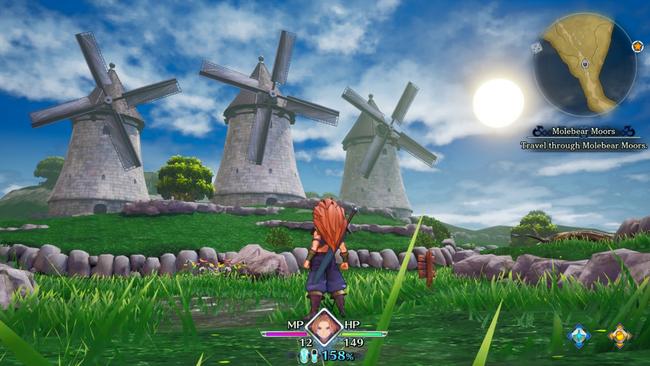
This system was very innovative for its time, though it has been seen in games a lot more since. It’s great when you’ve got selected heroes and really encourages replays, but it can fall apart a bit if you don’t have the right characters. On my first playthrough I chose Kevin, Duran, and Hawkeye because their characters and gameplay style interested me the most. However, because none of their stories lined up, I had three mostly one-note plotlines to follow. One cool feature is that once you meet a member of your party, you’re able to play through their prologue section. This may sound like a drag to some, so the game actually recaps you on events through a brief cutscene if you don’t want to stick around. Still, I don’t think the system works as well as it could, but I appreciate the game sticking to its roots and not trying to change too much.
The best character moments came from the small interactions they’d have when visiting a world, but it didn’t really happen much. No matter what, one character in your party will always be a bit left out from the story too, which feels a bit like a missed opportunity. All of the characters have interesting motivations and backgrounds, but the real standout was Kevin. He may be a beast boy, but he’s also the best boy.
Thankfully, Trials of Mana is endlessly charming, so the story faults aren’t too much of an issue. The world is a joy to explore and full of genuinely interesting locations. There are a few staples like the typical fire and ice areas, but then there are some really cool ones like the Sanctuary of Mana itself. The characters and enemies are also great, and I loved some of the things that felt very specific to the series like the dancing shopkeepers, sweets as items and cannons to travel. For someone who hasn’t been in this world before, I genuinely want to again. Trials of Mana’s world is an absolute stand out.
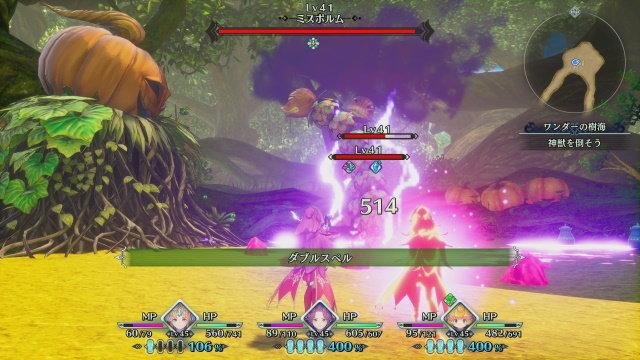
Trials of Mana also presents most of its elements very well. The world and characters are beautiful, and the soundtrack is mostly spectacular. There are a few themes that feel a bit repetitive, but generally, it’s very good and it also allows players to switch between the original and the remade tracks, which is always a good feature.
Note I said “most of its elements”. Unfortunately, Trials of Mana’s English voice acting is a bit all over the place. It’s okay for some characters like Hawkeye, but it never feels great. There are some characters who are affected more by these issues. Despite being my favourite character, Kevin is often very irritating to listen to because of how he’s voiced makes it sound like he’s questioning literally every word. The point of his character is to be somewhat uneducated as a Beastman, but that doesn’t mean he needs to use the same intonation for most of his scenes. This doesn’t ruin his character but it does become a little grating at times.
By far the worst example of this is Charlotte. She’s supposed to be a very important character, but her voice acting makes her incredibly hard to watch, and actively makes you want to avoid having her in your party. I could barely stand her for a few cutscenes, let alone for more than ten hours of gameplay. Similarly to Kevin, there’s a purpose to her being voiced this way but it doesn’t make it any less annoying.
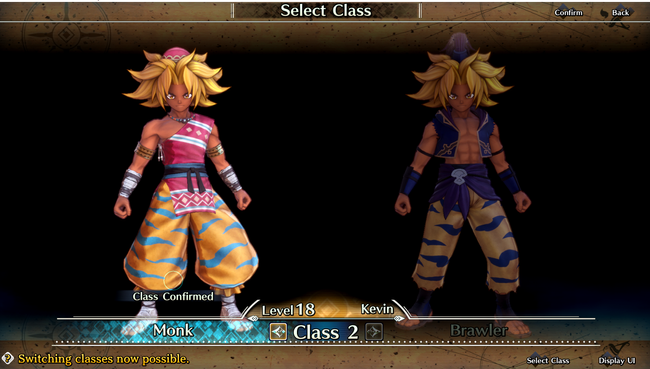
These issues are especially disappointing when you consider the huge amount of effort that went into voicing all of the lines in the game. With a bunch of different dialogue and story variations depending on character choice, it’s a shame that none of the voices are great. At least you can select Japanese voice acting which might help distance yourself from the distractingly poor voice performances in places. Loading times can be a little frequent and long too, at least on PlayStation 4.
Thankfully, Trials of Mana’s gameplay is generally great. Besides exploring the world, you’ll mostly find yourself in combat. You’ll start off with a few simple combos and a special attack, but eventually, you’ll start to gain access to more special moves and magic. Both movement and combat feel great, with a sense of weight that makes every hit feel impactful. Being able to switch between the three characters on the fly is awesome, and they all have unique play styles with great skill tree progression. It’s great because it feels accessible to new players, whilst having depth for those looking for it. This may sound small but one of the little things that really stood out in combat was the fact that special enemy attacks will have an indicator for when they’re about to hit.
There are a few small gameplay annoyances though. Your team members can be particularly dumb at times, which makes the lack of multiplayer features a little more painful. The class strikes are really awesome to use, but the long animations and inability to swap characters whilst using them can sometimes put the action on hold a bit. None of the issues ruin the combat by any means, but they’re worth mentioning.
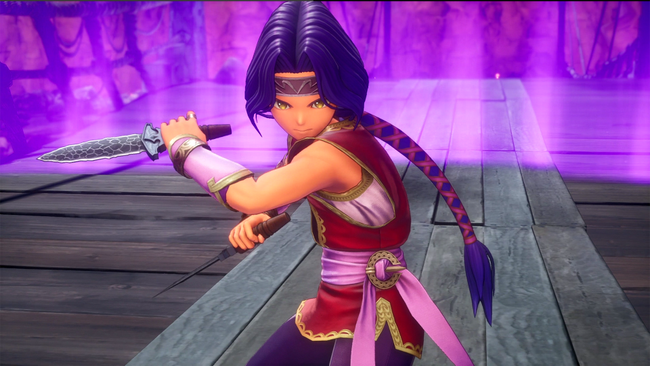
One surprisingly cool element of Trials of Mana is its loot. Although far from the main feature, the range of weapons and items you can collect are all pretty cool, especially since your weapons actually reflect on your character. You get the most interesting items from planting Item Seeds in pots and seeing what comes out. The random nature of it is fun for most things but can be a little annoying when you’re specifically trying to get a Class Item.
Combat is simplistic but fun, and it opens up the further you get into the game thanks to the main gameplay draw - classes. Trials of Mana lets you change your character’s class after getting to a certain level, affecting your stats, look and moves. Since combat can be fairly simple, the changes this brings are really appreciated. Classes massively increase replay value and always give you something to progress towards. It’s paced greatly as well and always shows up just when you start getting a little bored of your current class.
The difficulty can be a bit up and down. There are some bosses that provide a great challenge, but normal enemies feel a little on the weak side even without any grinding. Of course, this can be increased by playing on Hard mode but a brief foray there didn’t provide too much challenge. If you are experienced with action RPGs, I would definitely suggest trying out the higher difficulty level.
There are a few times when Trials of Mana moves outside of combat and exploration and tries to do a little light puzzling. Light is the perfect word to describe it, as it can literally be as simple as “follow the red flowers”. Depending on your view of puzzles this can be a good or a bad thing, but they weren’t particularly impactful either way during my adventure.
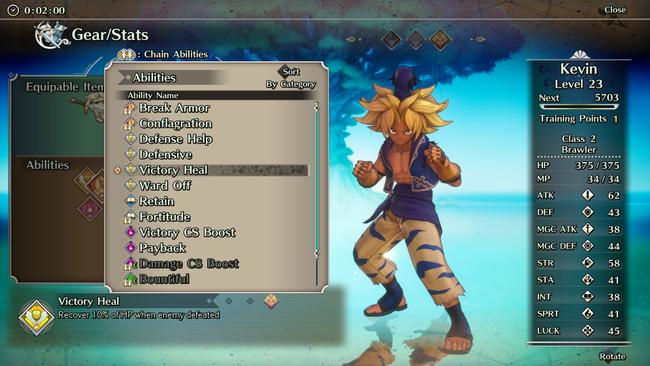
Brevity and replay value is another big plus side to Trials of Mana. With only a little side content to do, Trials of Mana never feels overstuffed and will take players about 15-20 hours on their first time through. This may sound low, but it’s the perfect length for the game, especially since it's worth a few replays to experience other characters and stories. All of the different character combinations and class changes mean that if you want to, you’ll be playing Trials of Mana for a good while.
Trials of Mana does have a few new additions that were not present in the original Super Famicom release. The least interesting is Li’l Cactus, who you can find 50 times throughout the game’s map. You’ll get rewards for finding him, but none of them are particularly interesting and it feels more like padding than anything else. More interestingly, a new choice of classes is added for players in a new episode after completing the main story. This extra scenario should take around two hours to beat and it’s actually pretty cool. It doesn’t feel like an excuse to get the characters to a new class, but even if it did it’s still really cool to have this content in there. It’s definitely a little treat for the original Trials of Mana fans. Part of me wishes it was introduced a little earlier in the adventure to give Class 4 more of a chance to shine though. There’s also a "New Game+ that transfers a few things for those really wanting to get the most out of the game.
Despite some presentation issues and some lack of difficulty, Trials of Mana is fantastic fun. It knows what it is and delivers on its promises as a remake with confidence. The world of Trials of Mana is one I won’t soon forget.